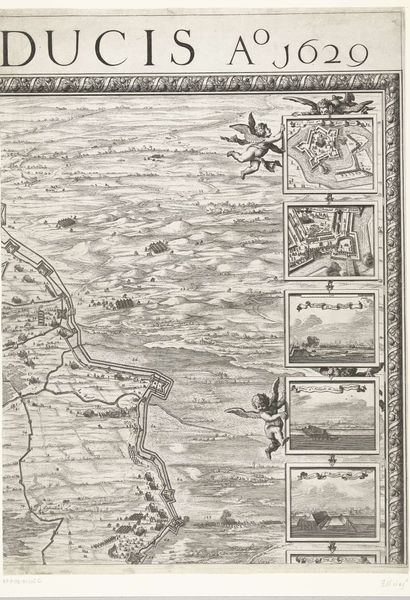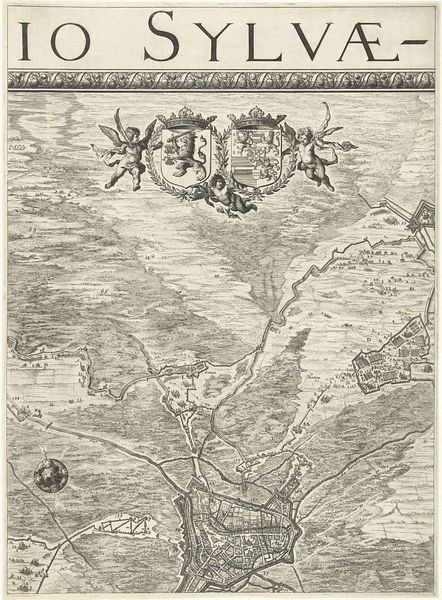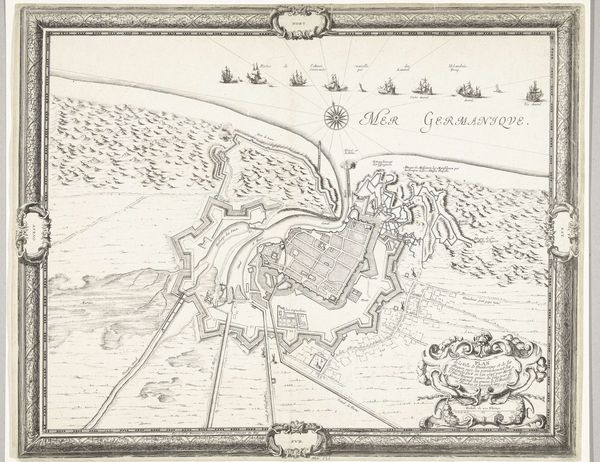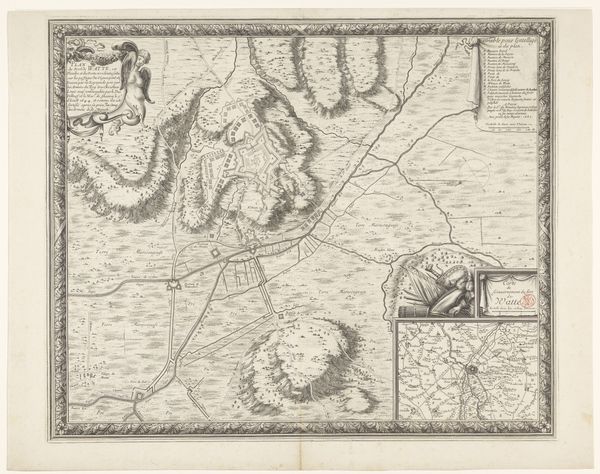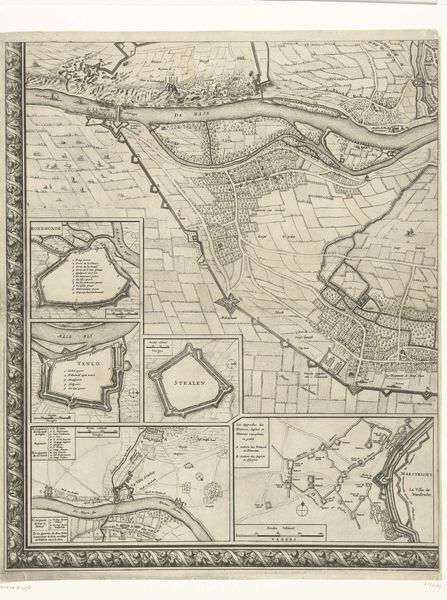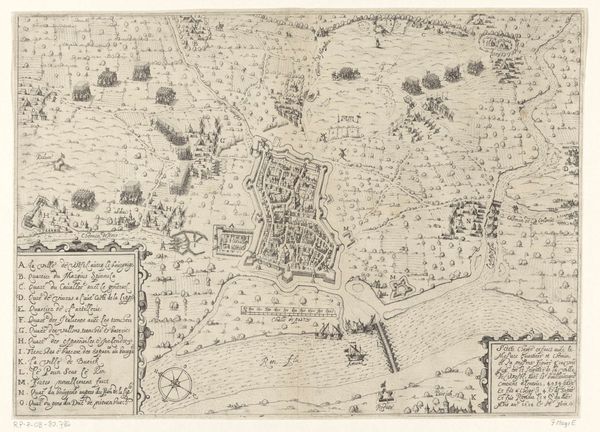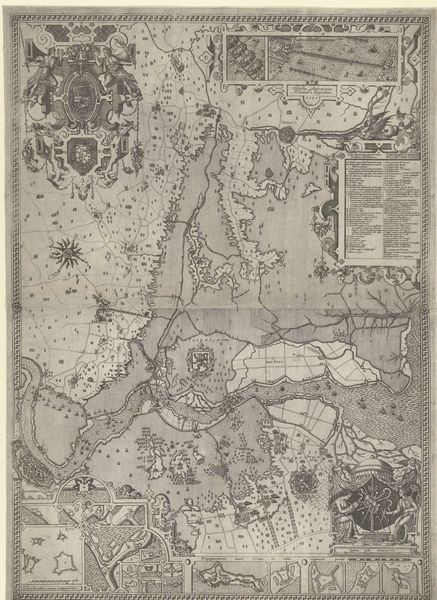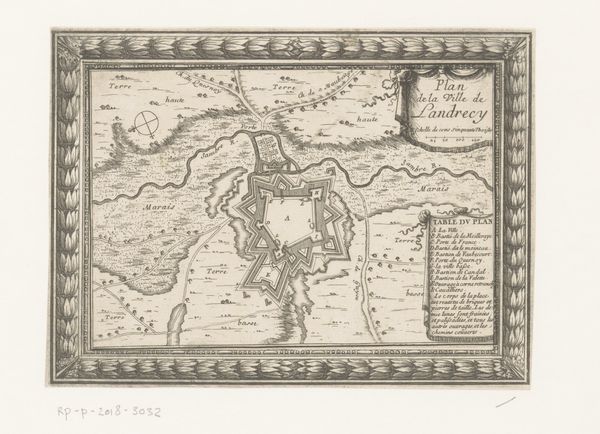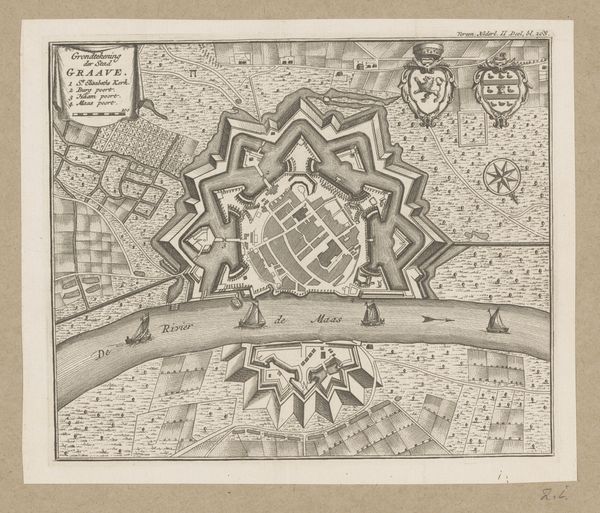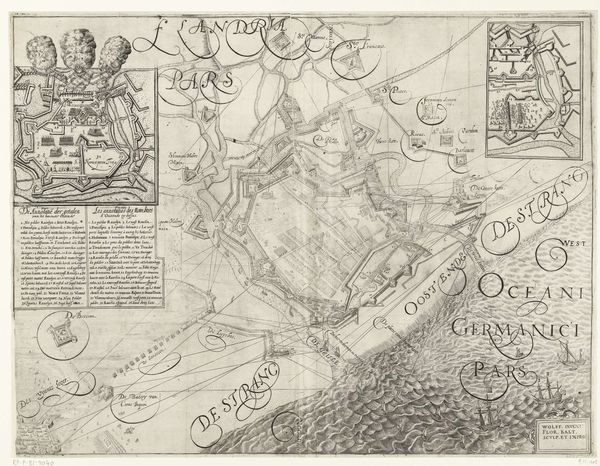
print, etching, engraving
#
baroque
#
dutch-golden-age
# print
#
etching
#
landscape
#
cityscape
#
history-painting
#
engraving
Dimensions: height 580 mm, width 468 mm
Copyright: Rijks Museum: Open Domain
Curator: This print from 1632, titled "Grote kaart van het beleg van Maastricht, 1632, plaat 3," depicts the Siege of Maastricht. Salomon Savery rendered this intricate scene in etching and engraving. Editor: My initial impression is of calculated precision. There's an undeniable power dynamic visually represented in the landscape, a strategic dominance etched onto paper. Curator: Indeed. Savery employs line and texture to delineate the topographical details—notice how the meticulously rendered fortifications contrast with the organic sprawl of the surrounding countryside. Editor: But the seemingly objective cartography is loaded with socio-political messaging. Who commissioned this piece, and how did it function as a tool of power? The act of mapping itself becomes a form of conquest, claiming territory both physically and ideologically. Curator: Precisely. Look at the systematic arrangement of the fortresses, rendered as geometric shapes; Savery uses form to demonstrate the organizational capabilities of military power. These architectural structures dictate how our gaze travels through the composition, effectively showcasing militaristic advancements. Editor: I'm more concerned with the lived experiences of those within the mapped space. Where are the people? The map renders the space as passive to facilitate occupation, neglecting the reality of human inhabitants subject to militarized power, effectively silencing narratives of trauma. Curator: Perhaps the relative absence serves as a reminder of the consequences of warfare. This stark rendering, however, directs us back to Savery’s skilled use of engraving to communicate a three-dimensional space on a two-dimensional plane. The lines function to depict the light reflecting off surfaces within the represented landscape, resulting in a dynamic visual impact. Editor: So, as an objet d'art, Savery’s map exhibits his skills, but we need to acknowledge its role within an incredibly complex and often devastating period. As the technology evolved, these became ways of controlling the populace, too. Curator: I agree completely. Close study reveals a calculated composition; contextual exploration exposes embedded social dimensions. Editor: A synthesis is imperative; appreciating aesthetic skill need not preclude analysis of historical consequence.
Comments
No comments
Be the first to comment and join the conversation on the ultimate creative platform.

